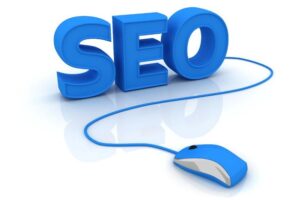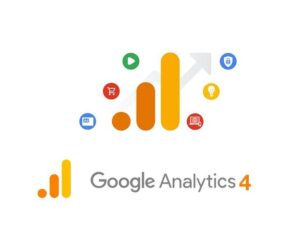Blog | Monday - 14 / 04 / 2025 - 9:52 am
In the world of digital marketing, any website can attract visitors through search engines, but the biggest challenge isn’t traffic—it’s converting that traffic into tangible results. Whether the goal is selling a product, subscribing to a newsletter, or filling out a contact form, the key question remains: how do you get the visitor to take the action you want?
The answer here requires a deep understanding of the relationship between Search Engine Optimization (SEO) and Conversion Rate Optimization (CRO) and using each technique in the right place to achieve the highest return on every visit.

Conversion Rate Optimization
SEO
While SEO and CRO may seem like separate tools, the success of any digital strategy requires their integration. SEO focuses on bringing visitors through organic search results via keywords, site structure, and content quality. CRO, on the other hand, is concerned with what happens once the visitor is on your site: Does the visitor engage? Does he/she click on a button? Does the purchase or subscription happen?
SEO can be seen as the door that brings visitors in, while CRO is what convinces them to stay and make a purchase. Therefore, neither can be considered more important than the other. In fact, if your pages aren’t ready for conversion, all your SEO efforts will be wasted without yielding actual results.
Whether we’re talking about attracting visitors or convincing them to convert, content remains the most important element on any page. Content isn’t just paragraphs written to rank for keywords—it must be rich, helpful, and directed towards solving the visitor’s problem. The visitor is not merely looking for information; they’re looking for a solution, and presenting that solution smartly is the key to success.
For instance, if you’re selling skincare products, instead of simply showcasing the product and its price, you could write a detailed guide on how to choose the right product based on skin type and include it directly on the product page. This content serves SEO in terms of ranking and visibility, and serves CRO by building trust and convincing the visitor to convert.

Conversion Rate Optimization
SEO
When a visitor arrives on your site via a Google search, they are likely searching for something specific. Here, the landing page must align with the user’s intent. It’s not enough to simply bring them to a page; you must give them exactly what they are looking for, and in an attractive manner.
User experience (UX) plays a critical role here, impacting both SEO and CRO. If the site is fast, easy to navigate, and designed to highlight content and clear calls to action (CTAs), the likelihood of conversion will rise significantly. However, if the site is slow or confusing, the visitor will leave quickly, sending negative signals to search engines.
Pop-up windows are one of the effective tools for increasing visitor interaction, but they must be used cautiously. The goal is not to annoy the user, but to offer an enticing deal or additional information at the right moment. For example, you can show a pop-up asking the visitor to enter their email address in exchange for a discount, a free guide, or subscription to important updates.
When these pop-ups are designed thoughtfully, with proper timing (such as when the visitor scrolls halfway down the page or attempts to leave the site), they can be a very effective way to boost conversions without negatively affecting user experience. This, in turn, supports the site’s ranking in search results, as search engines monitor engagement rates and time on site.
Landing pages play a starring role in any marketing campaign, serving as the place where visitors are converted into customers. One of the most important steps for improving conversion rates is continuously testing landing pages. You can modify simple elements like the headline, button design, or information layout and monitor the difference in engagement.
A/B testing helps you determine which version of the page performs better. While this technique is typically associated with CRO, it also indirectly impacts SEO. When a landing page improves and conversion rates increase, you’ll notice longer visit durations and reduced bounce rates—all of which are positive signals for search engines.

Conversion Rate Optimization
SEO
Often, a visitor is ready to make a purchase or sign up but hesitates due to a simple question they couldn’t find an answer to on the page. This is where live chat becomes invaluable, whether through human support or chatbots.
Having live chat makes the visitor feel secure and confident. For example, if you sell tech products, the chat can clarify the difference between two options or confirm whether shipping is free. These small conversations have a significant impact on purchase decisions and are a powerful tool for boosting conversion rates.
Moreover, live chat can help reduce the site’s exit rate, which is a metric that search engines consider when evaluating page rankings.
A shared factor between both SEO and CRO is site structure and page organization. Having a logical and easy-to-navigate layout between pages—whether through internal links or menus—helps the visitor move easily through your site and encourages them to browse multiple pages.
On the other hand, well-organized internal links help Google index pages more efficiently and improve site rankings. At the same time, they make it easier for visitors to navigate different sections, which increases the chances of conversion.
Achieving success in conversion rate optimization using SEO can’t happen without precise analysis and ongoing monitoring. It’s crucial to track traffic sources, user behavior on the site, exit pages, time spent on the site, and conversion rates for each page.
Using tools like Google Analytics and Hotjar gives you a detailed view of what visitors are doing within your site. Based on this data, you can constantly tweak your strategy, whether through content adjustments, design enhancements, or offer modifications.

Conversion Rate Optimization
SEO
Relying solely on SEO to attract visitors without thinking about converting them into customers is incomplete, and the opposite is true as well. You can’t focus on conversion without a steady flow of visitors. The real power lies in the integration of SEO and CRO and in thinking about the visitor’s experience from the moment they appear in search results to the moment they make a decision.
Start by optimizing your existing pages: make content more useful, improve design, add smart pop-ups, experiment with chat tools, and monitor the results. You’ll find that combining both strategies will completely transform your outcomes.